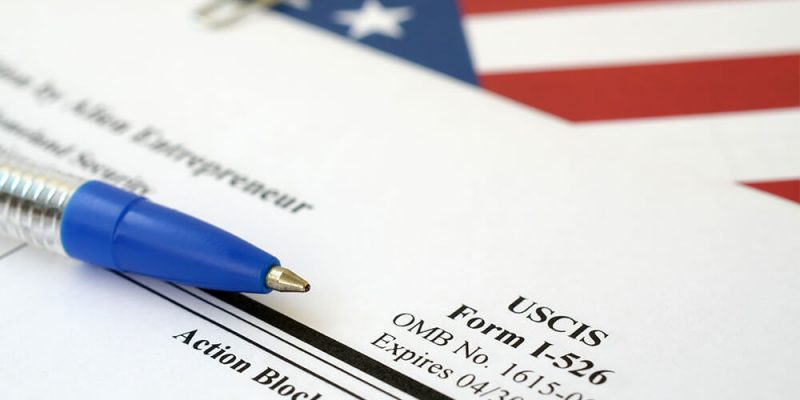For foreign nationals planning to permanently relocate to the United States, the EB-5 Immigrant Investor Program may be the perfect option. To begin their EB-5 journey, applicants must first complete an I-526 petition, where they outline details about their chosen new commercial enterprise (NCE), their investment capital, and how the NCE will satisfy the EB-5 job creation requirement. They then submit the petition to United States Citizenship and Immigration Services (USCIS) for adjudication. It is crucial that the applicant provide accurate and consistent information in their I-526 petition—otherwise, they may receive a request for evidence (RFE) or notice of intent to deny (NOID). Once the petition is approved by USCIS, the investor is eligible to apply for an EB-5 visa and receive conditional permanent resident status.
Those planning to make an EB-5 investment must invest the minimum amount of $1.8 million in their chosen EB-5 project. If the project is located in a targeted employment area (TEA), the minimum investment amount required is dropped to $900,000. Investors complete their I-526 petition after their EB5 investment capital has been transferred to the designated account (typically an escrow account). In the case that the petition is denied, the capital is generally returned to the applicant, but it depends on the precise terms of the given project.
Those interested in making an EB5 investment can find the most updated version of Form I-526 on USCIS’s website. All prospective investors should consult an experienced immigration attorney and do thorough research on the program and their prospective project. This will help ensure that they have the highest chance of completing a successful EB-5 investment and securing a future in the United States. Once they have selected an EB-5 project that they are confident in and acquired the appropriate funds, they are ready to start filling out their I-526 petition.
Personal Information Requirements
When completing Form I-526, investors are required to provide a sizeable amount of personal information to USCIS. Investors should begin preparing their petitions ahead of time to make sure they have the necessary information about themselves and any immediate family members they want to include on their application. Some examples of required information follow:
- Country of citizenship, as well as current and past addresses
- Personal information about the applicant’s spouse and dependent children
- History of U.S. immigration dealings and previous visas
- Employment status and history
- Present U.S. immigration status details
- EB-5 investment information
Providing much of this information is fairly straightforward and should not present an issue for most investors. However, the supporting documentation needed to satisfy other requirements can be a major hassle to obtain
Accompanying Documentation for I-526 Petition Requirements
One of the most complicated aspects of completing an I-526 petition is gathering all the necessary documentation to meet all the requirements. For example, all EB-5 investors must meet the source-of-funds requirement, which requires that all investing capital be derived from legal sources. It is important to note that EB-5 investors may acquire their investing funds from a wide variety of sources, as long as they can prove the legality of the sources. If the investing capital was gifted to the investor, a note from the donor must be provided which states that the money was a gift and the investor is not required to pay it back. The donor must then offer up documentation to prove the lawful sources of the gifted capital.
Aside from the source-of-funds requirement, EB-5 investors must also include documentation that demonstrates how their investment will lead to the creation of 10 new full-time jobs for U.S. workers. Investors can provide financial reports, hiring timetables, and other records from their NCE to satisfy the job creation requirement. If the investor plans to invest the lower minimum of $900,000, they are also responsible for providing the necessary documentation to justify the project’s TEA designation.
When compiling the necessary documents for an I-526 petition, all EB-5 investors should work with an immigration attorney and their project developer. If the EB-5 investor is investing through an EB-5 regional center, they should also collaborate with the regional center manager when compiling information on their EB-5 project. Ensuring that all information is accurate and consistent is the best way to avoid a request for evidence (RFE) or a possible denial. Working with an immigration attorney will ensure that the EB-5 journey is as quick and painless as possible.







